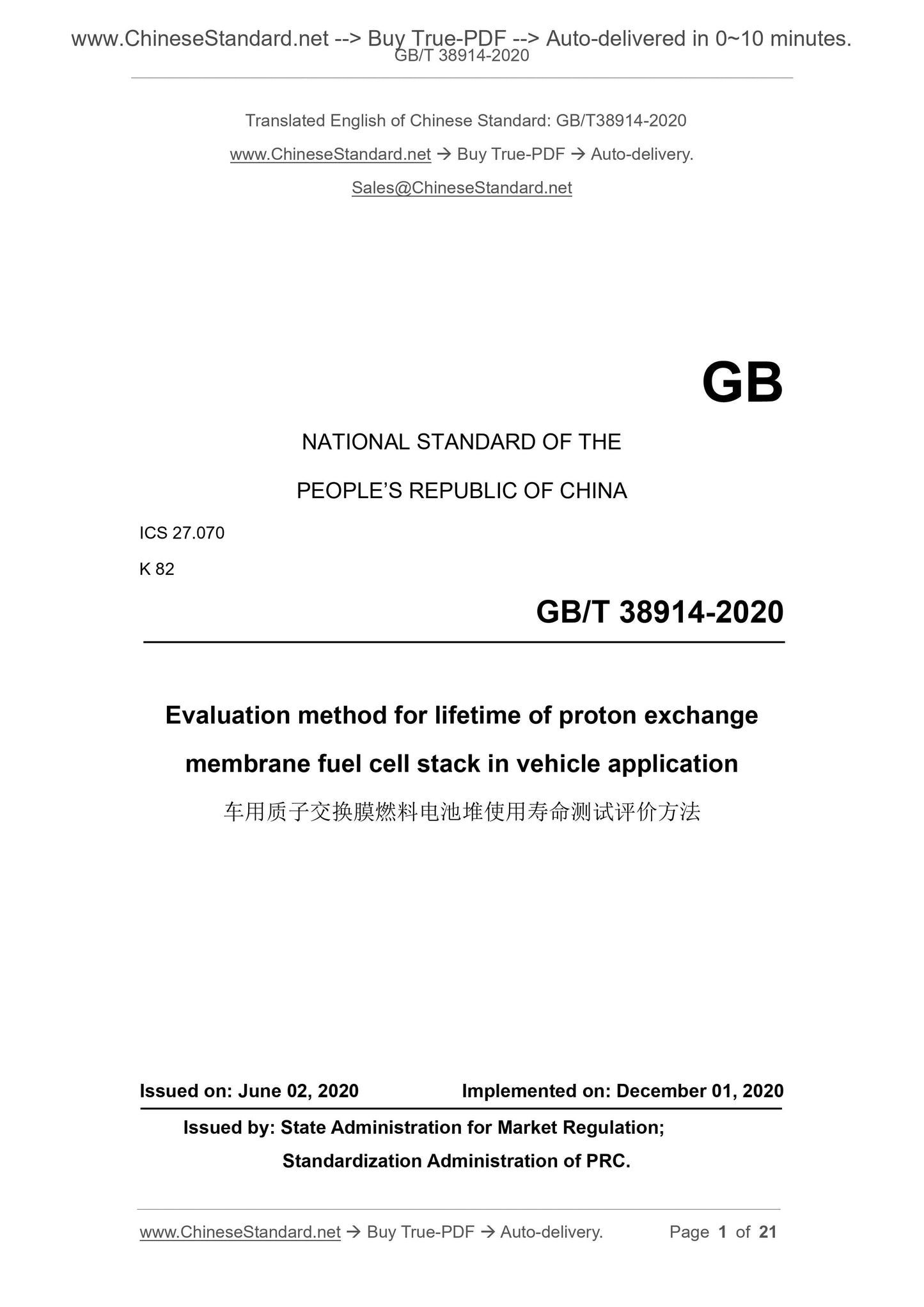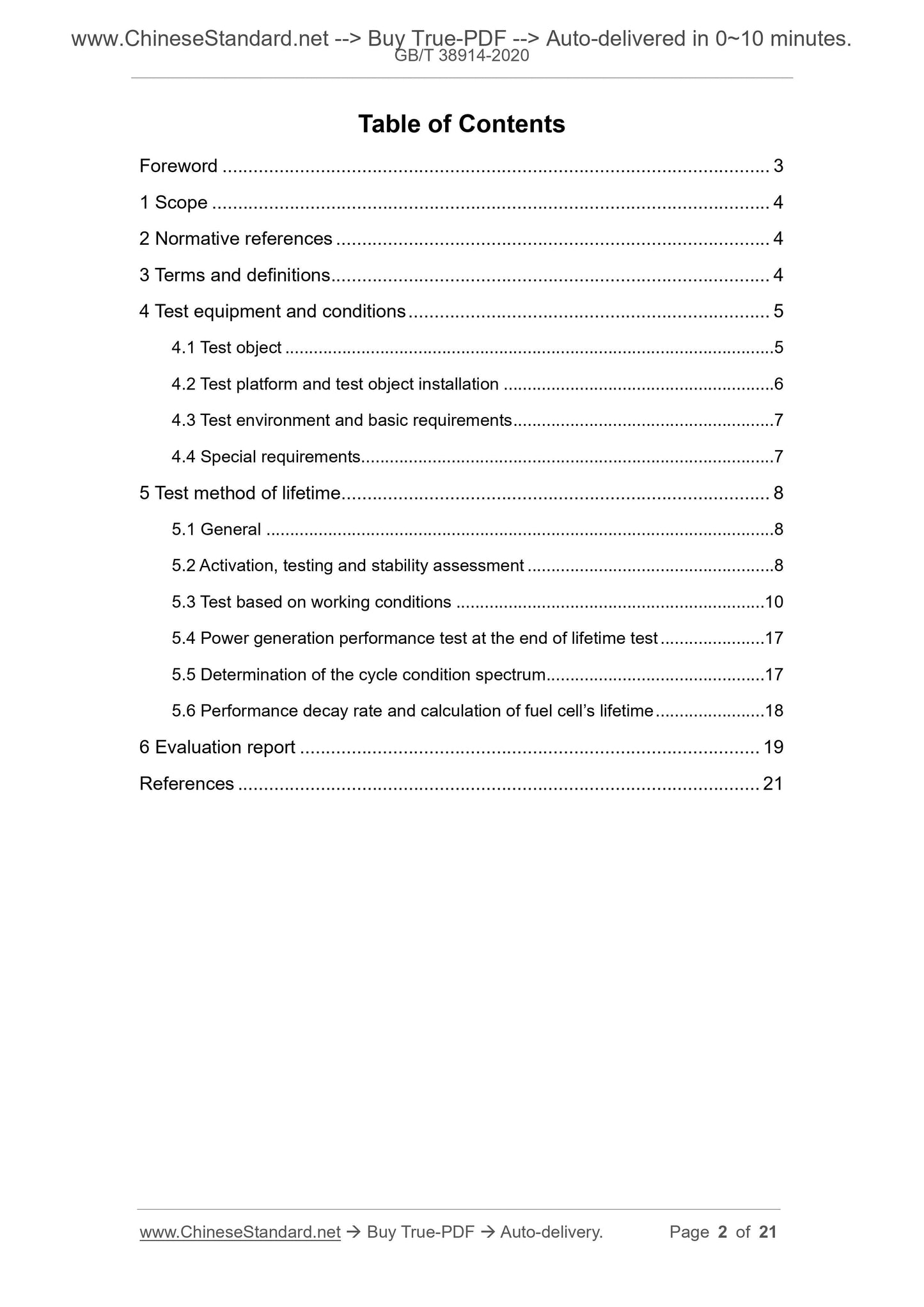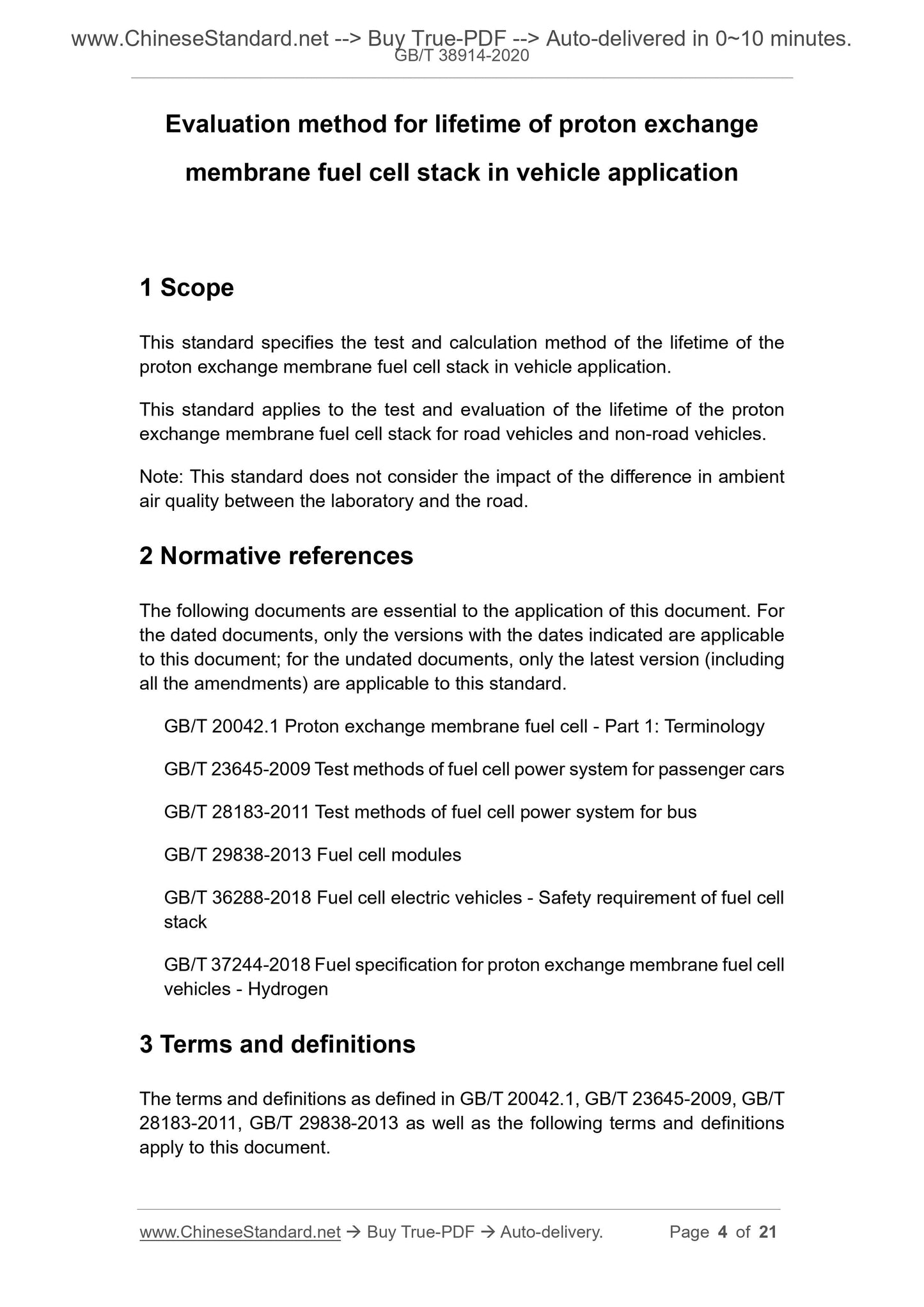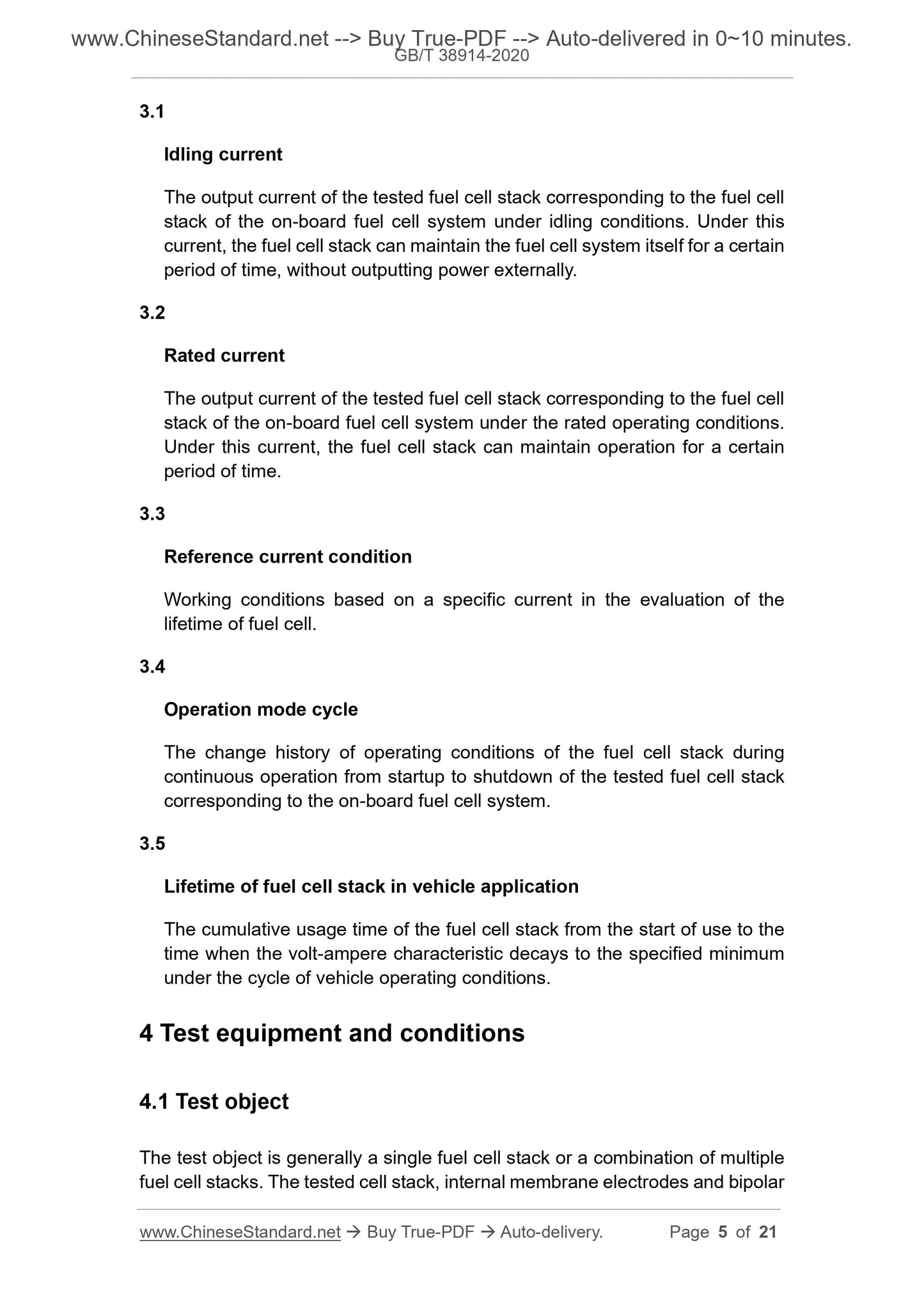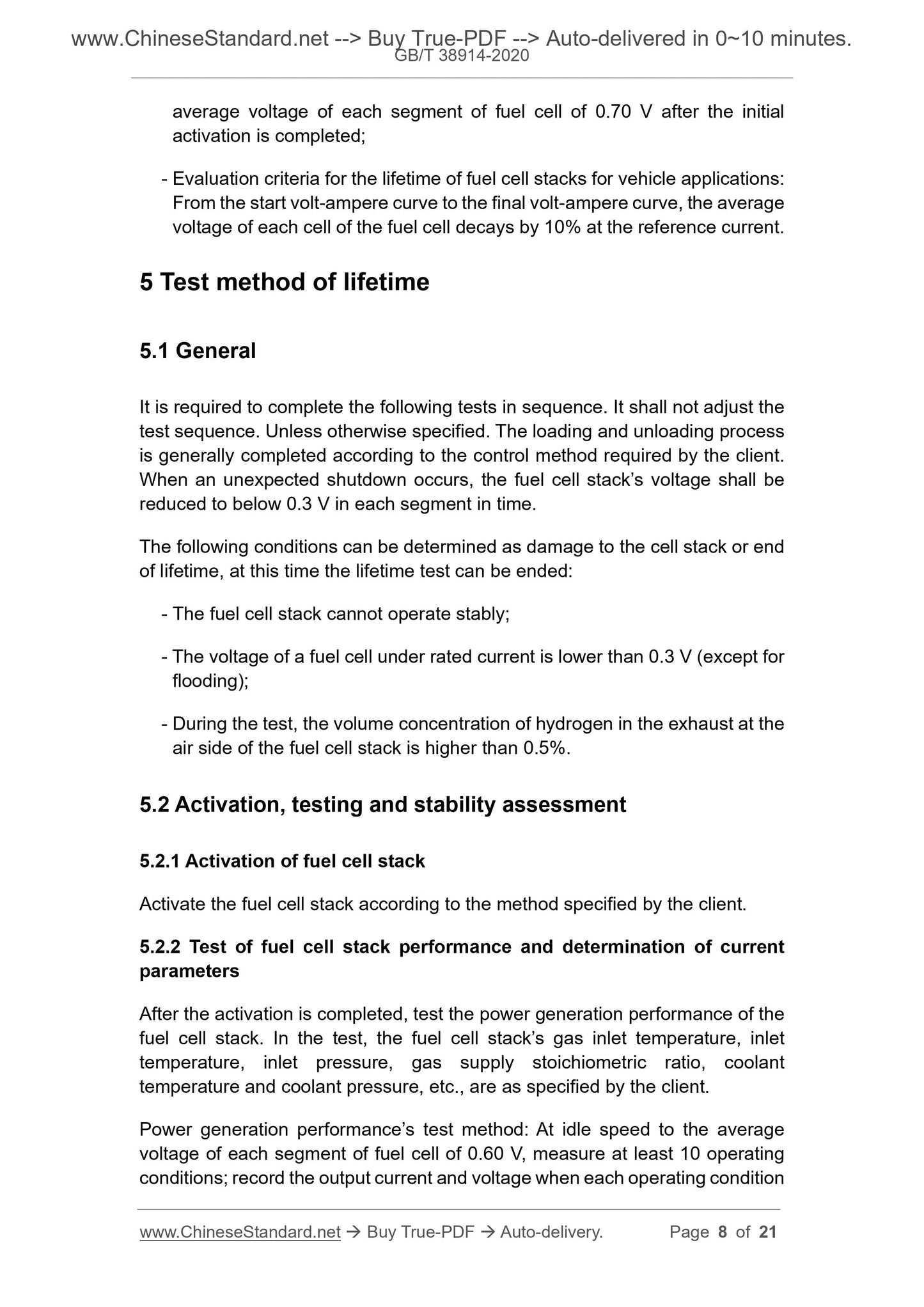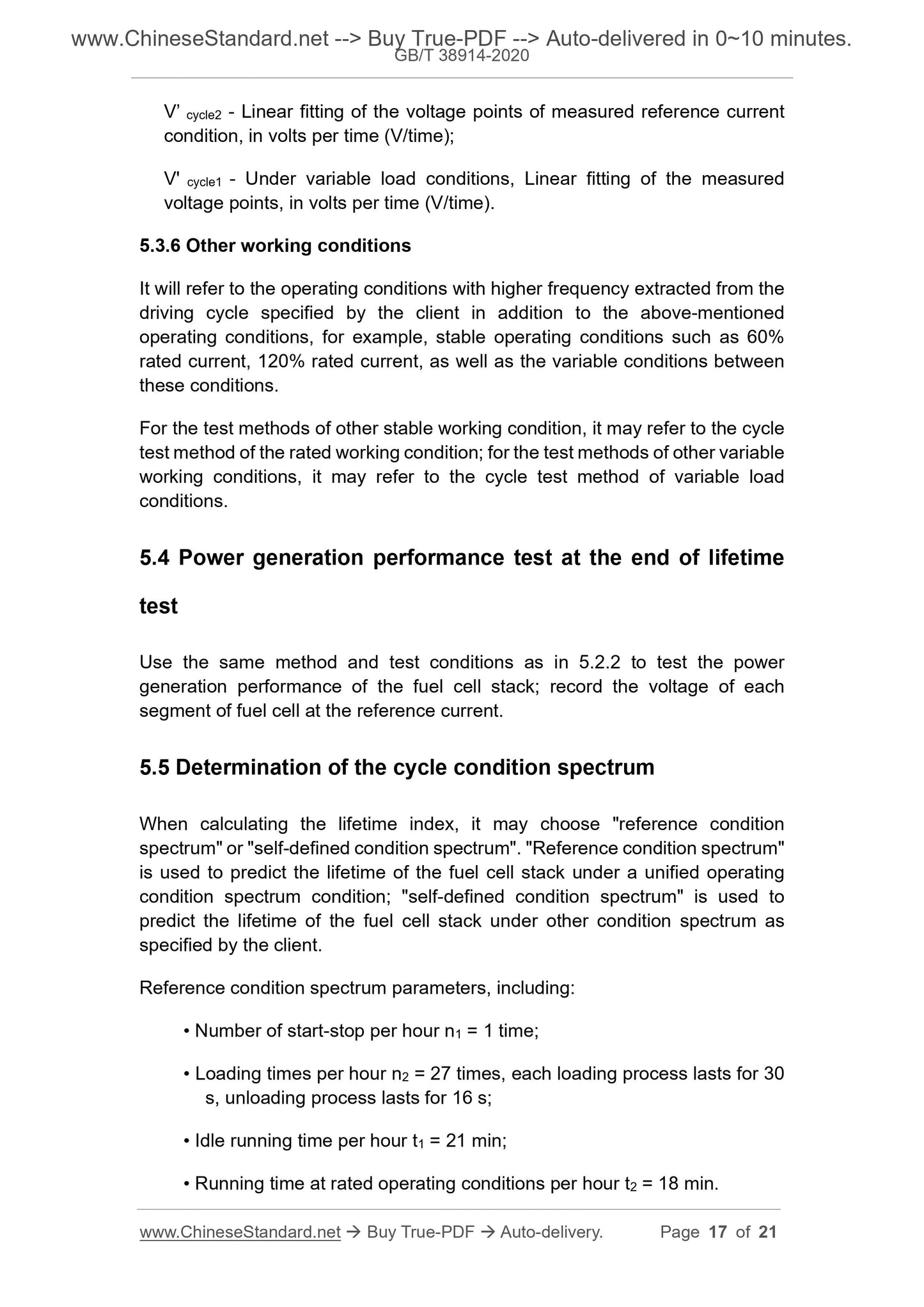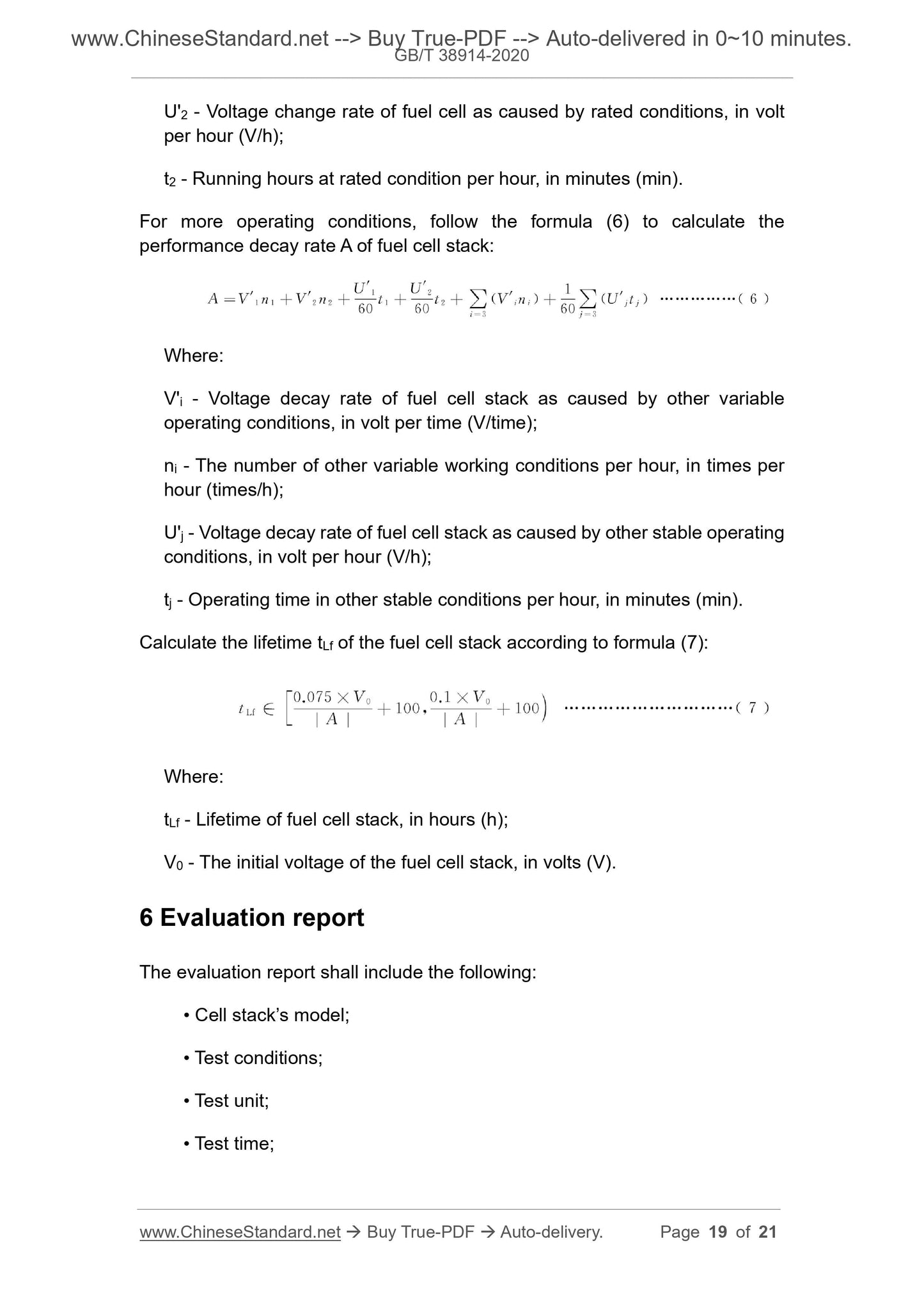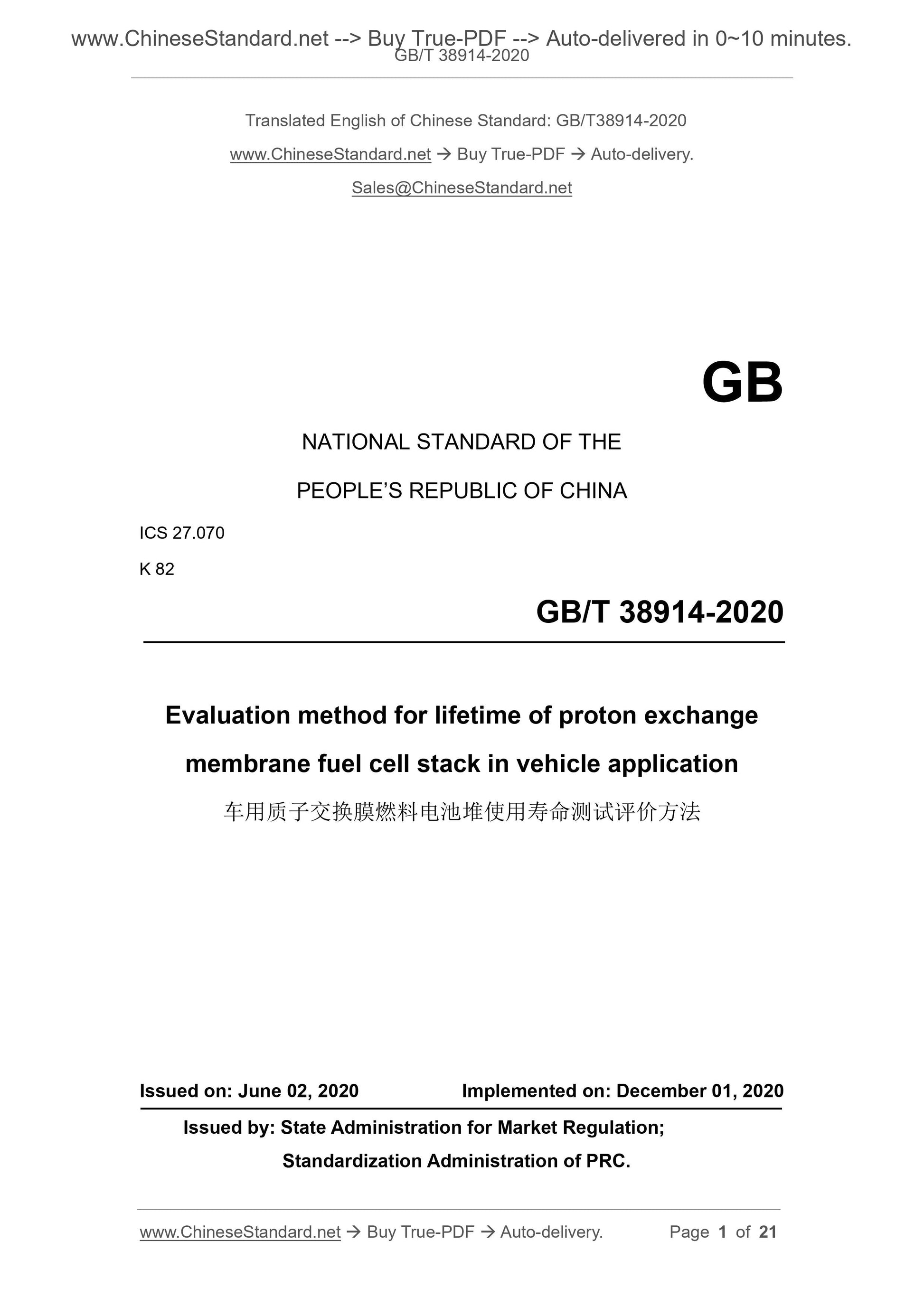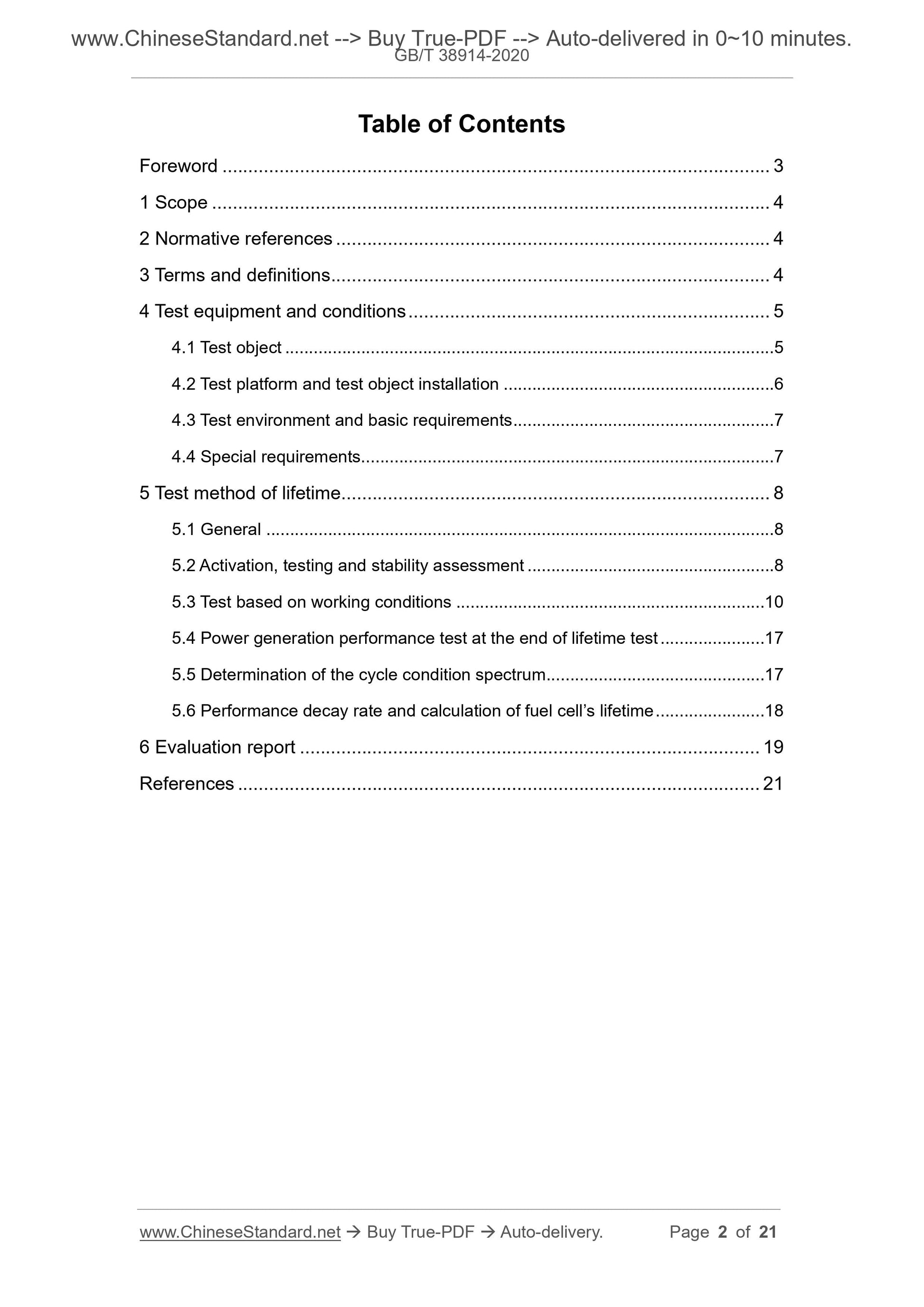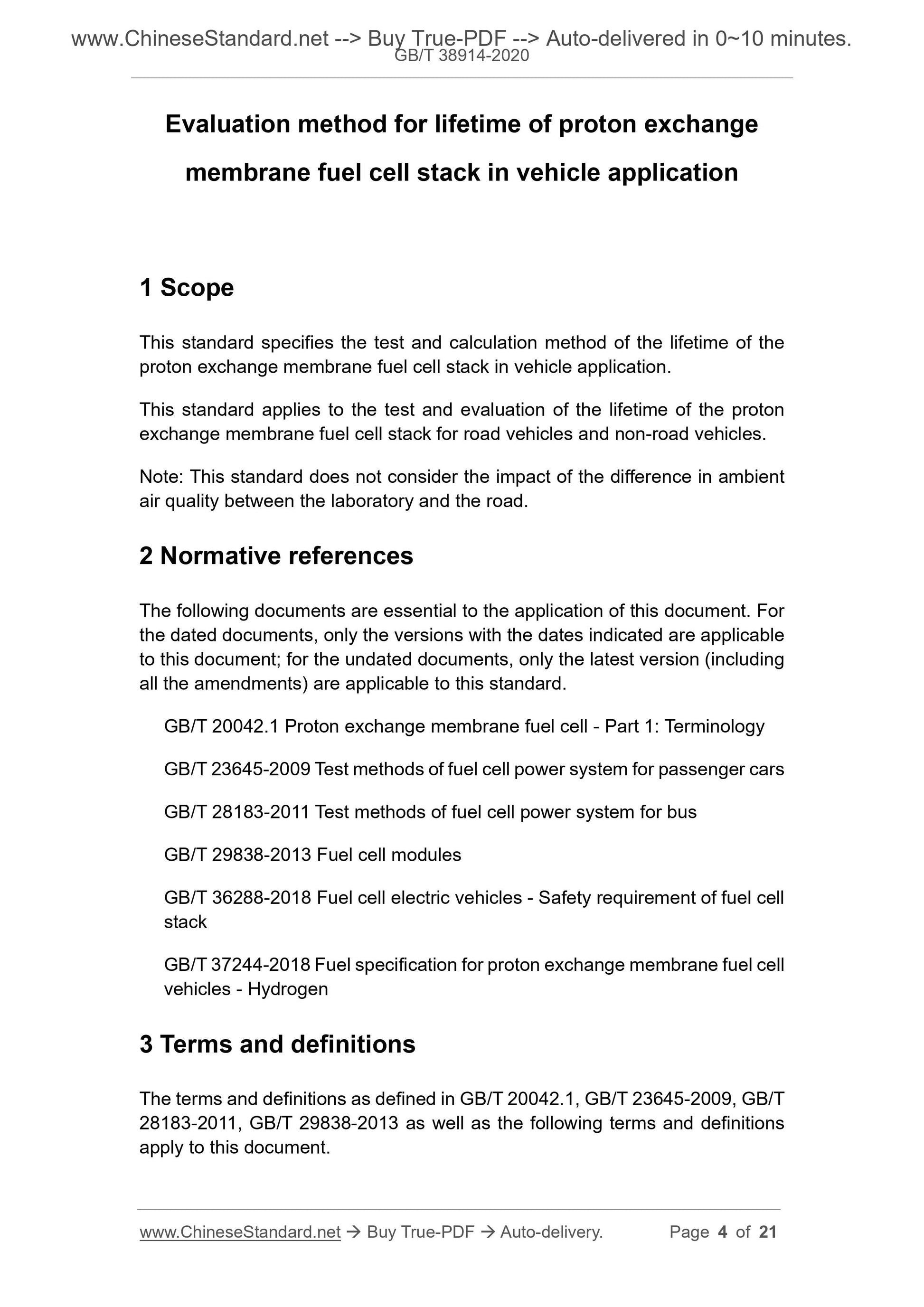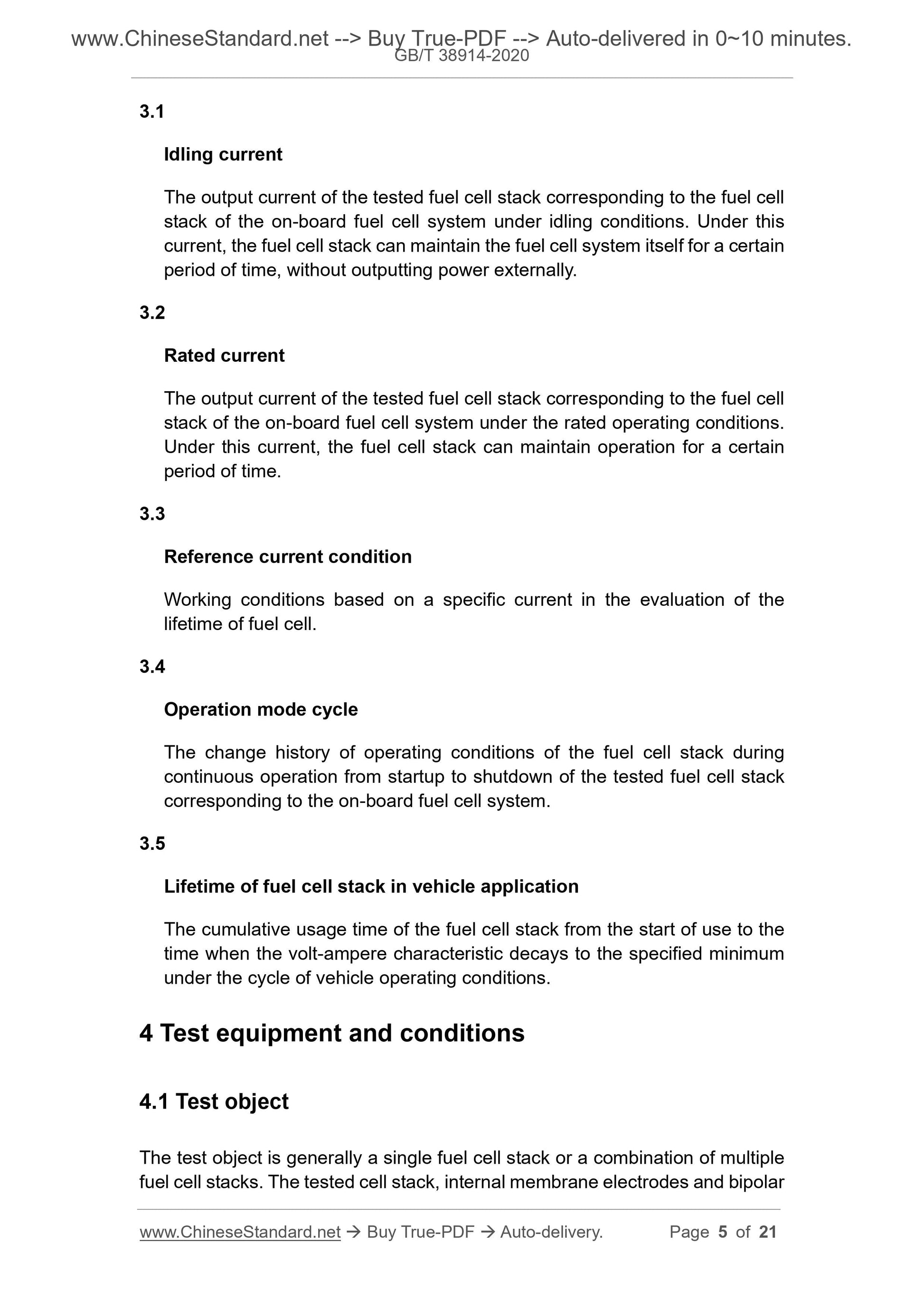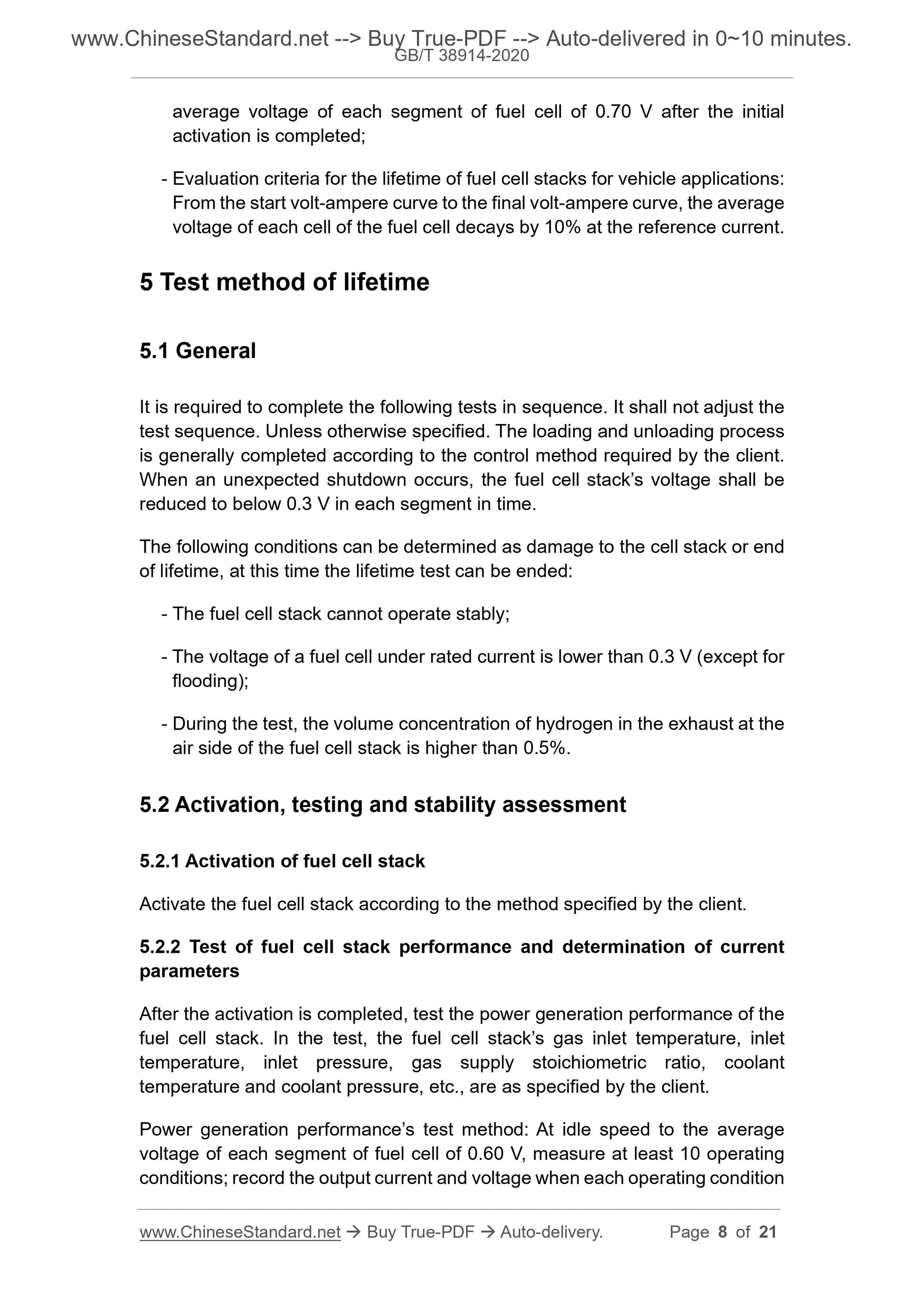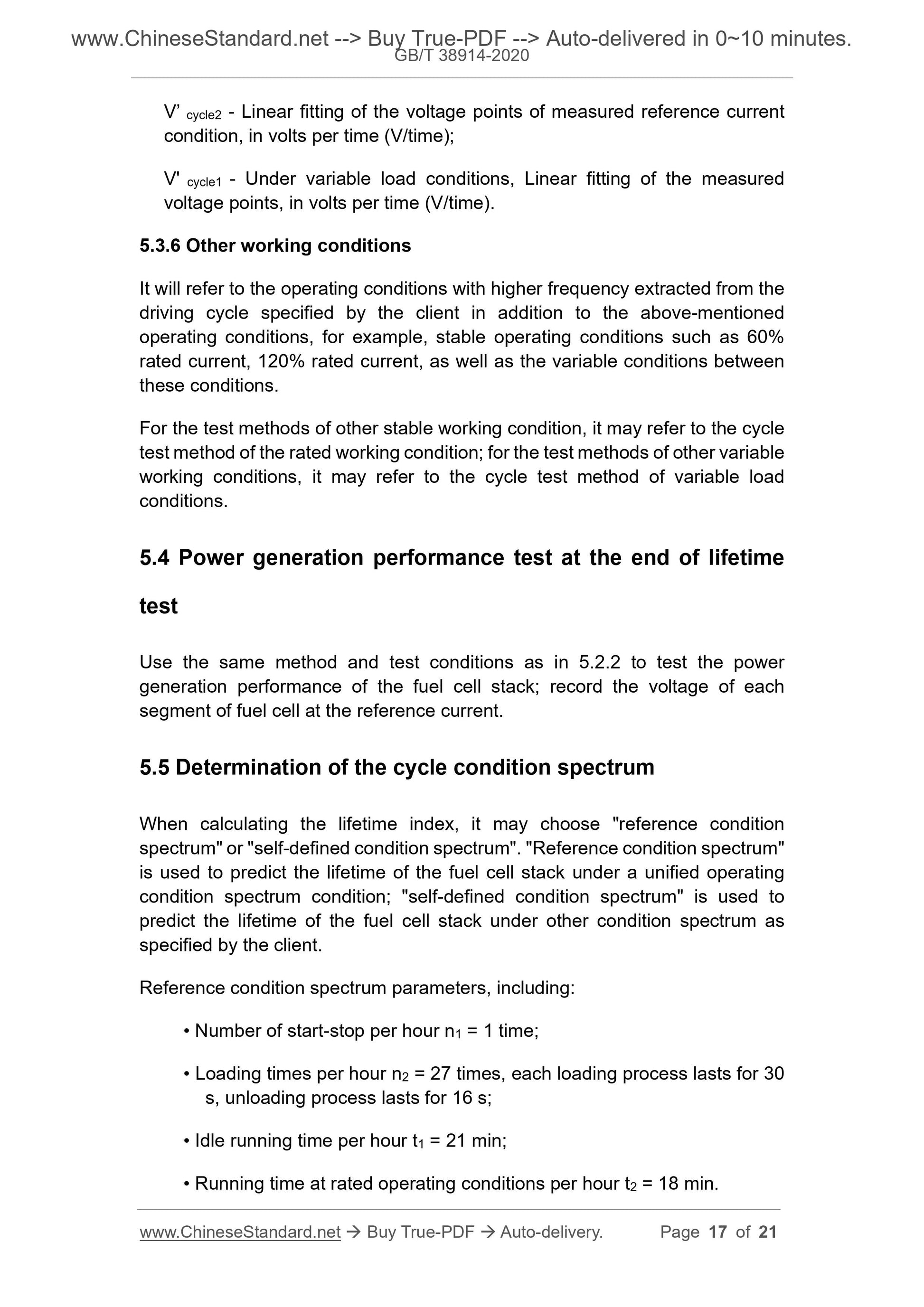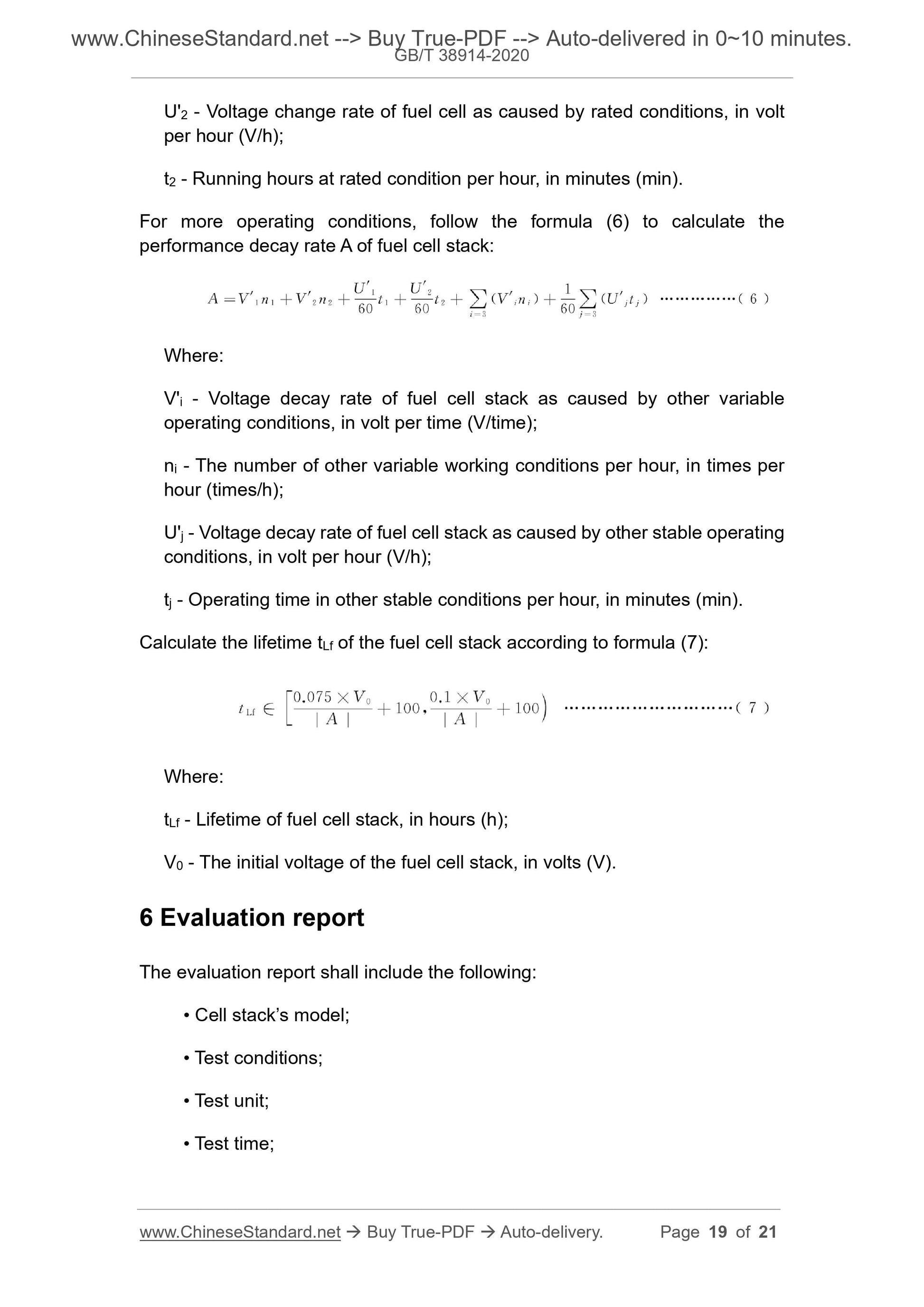1
/
of
7
www.ChineseStandard.us -- Field Test Asia Pte. Ltd.
GB/T 38914-2020 English PDF (GB/T38914-2020)
GB/T 38914-2020 English PDF (GB/T38914-2020)
Regular price
$145.00
Regular price
Sale price
$145.00
Unit price
/
per
Shipping calculated at checkout.
Couldn't load pickup availability
GB/T 38914-2020: Evaluation method for lifetime of proton exchange membrane fuel cell stack in vehicle application
Delivery: 9 seconds. Download (and Email) true-PDF + Invoice.Get Quotation: Click GB/T 38914-2020 (Self-service in 1-minute)
Newer / historical versions: GB/T 38914-2020
Preview True-PDF
Scope
This standard specifies the test and calculation method of the lifetime of theproton exchange membrane fuel cell stack in vehicle application.
This standard applies to the test and evaluation of the lifetime of the proton
exchange membrane fuel cell stack for road vehicles and non-road vehicles.
Note. This standard does not consider the impact of the difference in ambient
air quality between the laboratory and the road.
Basic Data
| Standard ID | GB/T 38914-2020 (GB/T38914-2020) |
| Description (Translated English) | Evaluation method for lifetime of proton exchange membrane fuel cell stack in vehicle application |
| Sector / Industry | National Standard (Recommended) |
| Classification of Chinese Standard | K82 |
| Classification of International Standard | 27.070 |
| Word Count Estimation | 18,177 |
| Date of Issue | 2020-06-02 |
| Date of Implementation | 2020-12-01 |
| Issuing agency(ies) | State Administration for Market Regulation, China National Standardization Administration |
Share
